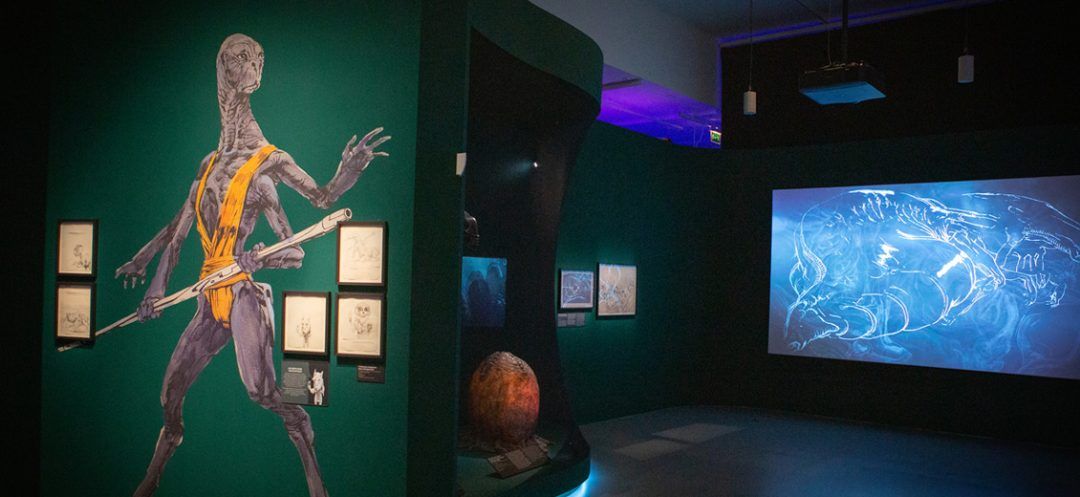
©Photo Credit: La Cinémathèque Paris - official website.
Since the release of his first feature film, Terminator, in 1984, James Cameron has emerged as a distinctive talent, revolutionizing the cinematic status quo for decades to follow. The exhibition, The Art of James Cameron, running from April 4, 2024, to January 5, 2025, at La Cinémathèque in Paris, illustrates how the key themes and motifs in his work have evolved from these initial sketches to their ultimate realization in iconic cinematic sequences.
Over the years, as a meticulous and demanding filmmaker, James Cameron has directed a series of blockbusters that have dominated the box office and also left an indelible mark on pop culture. Known for their cutting-edge visual effects, these films have expanded the boundaries of what audiences deemed possible; yet, the genesis of James Cameron's ideas can be traced back to the pages of his childhood sketchbooks.
This evolution has been fraught with challenges, as James Cameron's vast imagination often clashed with the constraints of existing technology, compelling the director to spearhead numerous technological innovations to realize his visions. His relentless creativity has thus produced seminal films such as Aliens (1986), Titanic (1997) and Avatar (2009), each revolutionizing the film industry through continuous advancements in special effects.
[gallery link="none" size="full" ids="255247,255248,255249,255250"]
The origins of this cinematic phenomenon are evident in James Cameron's early illustrations, where his nascent ideas began to take shape. These sketches have grown increasingly sophisticated over the years, eventually forming the aesthetic foundation of his celebrated cinematic universe. From killer robots and mechanized exoskeletons to lush jungle planets and scenes of nuclear desolation, the themes and motifs that define James Cameron's work were present in his subconscious from adolescence.
Over the years, James Cameron has accelerated his artistic process, transitioning from pencils, brushes and markers to the most expansive canvas: the big screen. The demands of filmmaking have led him to delegate the design of his subsequent films to concept artists, yet James Cameron remains the principal visionary, channeling the talents of his teams to construct ever more ambitious universes.
Despite the growing complexity of his work, the director is still driven by the same impulse that once led him to fill his notebooks with illustrations of aliens, distant worlds and technological marvels. James Cameron is a storyteller who, by refusing to accept the limitations of his chosen medium, has initiated systemic change that has altered the course of film history. The Art of James Cameron highlights this remarkable creative journey by showcasing treasures meticulously selected from the director’s personal archives: his earliest sketches, preparatory drawings for unproduced films, and concept arts that form the cornerstone of his critically acclaimed work.
Alongside hundreds of drawings and paintings, the exhibition features props, costumes, photographs and interactive technologies developed or adapted by James Cameron, underscoring his reputation as an innovator across multiple disciplines. The exhibition also offers rich multimedia experiences and is divided into six major themes reflecting the key elements of his work: Dreaming with Eyes Wide Open, The Human Machine, Exploring the Unknown, Titanic: Time Travel, Creatures: Humans and Aliens, and Untamed Worlds. James Cameron describes this exhibition as "an autobiography through art," an original way to trace sixty years of exceptional creativity where the past illuminates the present. Like his characters in Terminator, James Cameron has always sought to define his own future, and this exhibition provides an unparalleled glimpse into his innovative creative trajectory.
Read more




Comments